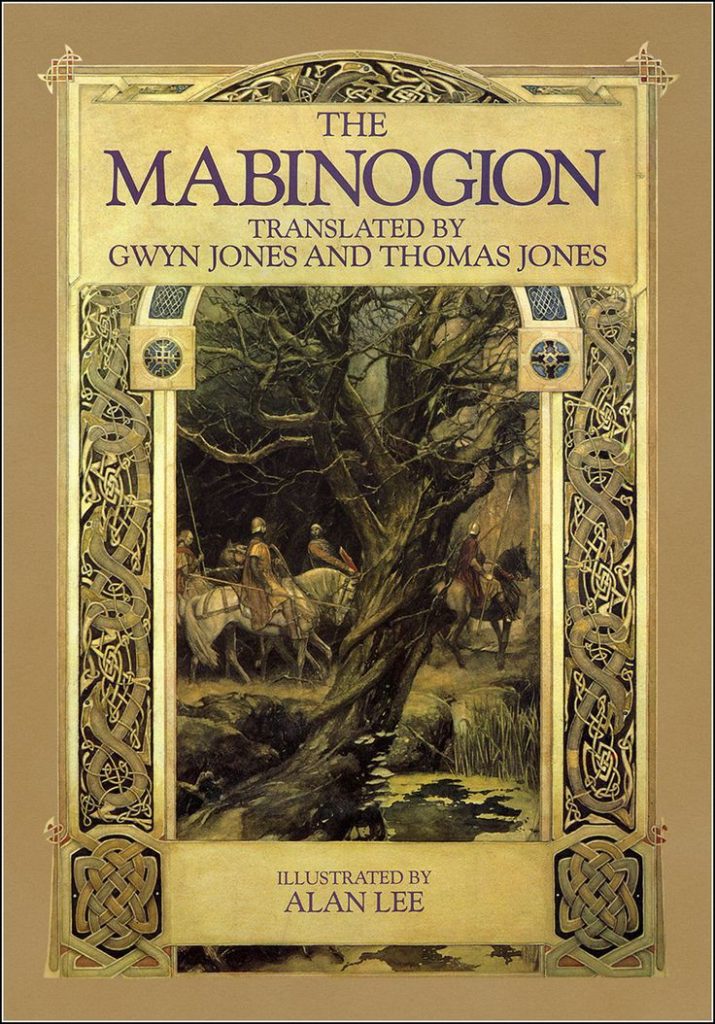A region’s mythology and folktales gave us a glimpse into the root of its traditions, customs, and beliefs. From the African tribal iteration of the beginning of the World to the emergence of chivalric romance in medieval Europe, these books transport you to the far-flung civilizations of which they tell and provide fascinating and valuable insights. Whether it be ancient original texts, translations, or modern retellings, there is much information and entertainment to be gleaned from mythological books.
Here are some mythological book recommendations from around the world.
The Mabinogian is an anonymously written Welsh text compiled in medieval times. It is one of the most immersive and fantastical narratives drawing on Celtic mythology and medieval history. These stories told centuries ago are intact today with their charm and wit waiting to be discovered by new generations. In fact, well-known characters like King Arthur and fae folk who are alive today in their retellings and reimagined stories were present before in these ancient texts. The Mabinogian has timeless themes like power, honour, and conflict.

Indaba, my children is a book written by Credo Mutwa outlining African tribal history, legends, customs, and religious beliefs. It records mythological variations of stories of the Bantu people and stories of their God’s creation of the world, people, and how things came to be. Absorbing and wonderfully written, this book sheds light on the legends from which the history of these people might be constructed.
The Poetic Edda is a collection of epic poems of heroes and Gods of Norse Mythology. Originally written in Old Norse and compiled in written form in the medieval era, this mythological book is now available in several modern translations to introduce it to newer readers. It tells entertaining and fascinating stories of well-beloved characters like Thor and Loki embodying cultural life and views of the North.
Myths from Mesopotamia uncover new translations of the main myths and epics written in Akkadian like the Creation Myths and the Epic of Gilgamesh. It gives us a glimpse into the stories originally written in cuneiform on clay tablets and is a great, easily understood-introduction to the myths of an ancient civilization. With parallels to better-known stories like those from the Bible, it has themes of courage, loss, and quest that remain relevant today.
The Legends of Moonie Jarl became the first ever indigenous Aboriginal children’s book to be published in Australia in 1964. It charts the myths and folktales of the Butchulla people of Fraser Island and the Fraser Coast of Queensland. It is complete with illustrations done in tandem with the writings and contributes to understanding the culture and community pride locally. Despite being a mythological book for children it can be enlightening to people of any age looking to learn about Aboriginal myths and legends.
Constellation Myths is a translation of later summaries from Eratosthenes’s lost handbook with a guide to astronomy compiled by Hyginus. This text provides insight into ancient science and culture alongside the Greek astral myths associated with the constellations, stars, and planets. It is the perfect combination of astronomy, astrology, and Greek mythology and an incredibly interesting compilation of both popular and lesser-known myths.
Essential Chinese Mythology is a collection of stories by Martin Palmer and Zhao Xiomin that present a comprehensive and colourful depiction of the broad tradition that informs Chinese storytelling. These stories that change the world include Confucian, Taoist, and Buddhist mythology and are a great place to start learning about Chinese mythology.
Native American Myths written by Rosalind Kerven is the most comprehensive mythological book based on years of research by an expert in the genre. It includes fascinating information about the cultural beliefs, concerns, and goals complete with ancient stories, verses, and anecdotes from 55 different Native American people.
The Palace of Illusions written by Chitra Banerjee Divakaruni is a beautifully written reimagining of the Mahabharata told from the perspective of Draupadi. A great alternative way for people to learn about the epic without drowning in its several volumes, this interpretation opens the ancient story up to a new audience. With captivating insights into the cultural impositions on women and the brutalities of war, it is one of the most accessible and captivating mythological books available today.

The Bear and the Nightingale is the first book in a trilogy of mythological books written by Katherine Arden that incorporates elements of Russian myth and folklore. It follows a young girl called Vasya Petrovna who is able to communicate with mythological creatures at a time when religion and scientific belief are trying to wipe out belief in such creatures. A major theme is the conflict between the old and the new.
Civilization as we know it has existed for thousands of years. Our generation is lucky enough to access historical texts and accounts and learn about the people who came before us. These mythological books are our very own time machines that allow us to experience lost cultures and communities. What are some strange traditions from around the world you have come across?


